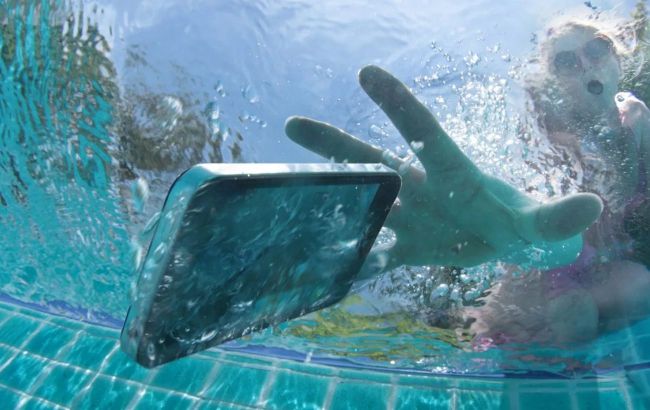Saving a soaked smartphone: Quick tips
 What to do if the smartphone fell into water (photo: Getty Images)
What to do if the smartphone fell into water (photo: Getty Images)
When an accident lands your pricey gadget in water, it's a sinking feeling for many. However, it's crucial to understand that even after a dive, there's a chance to salvage a waterlogged smartphone. According to the sources, including MacRumors, Wired, Asurion, and MOYO, some tips can assist you in rescuing your phone if it takes an unexpected swim.
What to do if your smartphone takes a dive immediately
Remove it from water
The key to saving a drowned smartphone is quick action. The longer the device stays in water, the higher the chance of irreparable damage. Retrieve it from the water promptly.
Turn off the device
If your smartphone is still on, turn it off immediately. This reduces the risk of a short circuit and improves the chances of a successful recovery.
Remove the battery
If possible, take out the battery. This lowers the risk of damage to critical components.
Dry the device
Use a paper towel or napkin to soak up excess moisture from the smartphone's surface. Avoid shaking the device to prevent water penetration through connectors.
Check for functionality
After drying, turn on the smartphone and assess its performance. If it won't turn on, attempt charging it. If problems persist, seek assistance from professionals.
Contact the service center
If your independent efforts yield no positive results, reach out to a service center. Experienced specialists can conduct a more in-depth diagnosis and recovery.
Following these simple steps could be the decisive factor in rescuing your smartphone from water damage. Act promptly and exercise caution.
Why using rice to dry your phone isn't effective
The use of rice and silica gel for drying phones is a commonly discussed method. However, it can prove ineffective and even harmful to the device in some cases.
These granules only absorb water from the exterior, failing to ensure complete drying of internal parts, potentially leading to oxidation and corrosion. This method is permissible only for individual battery drying, and even then, there's a risk of negative consequences.

